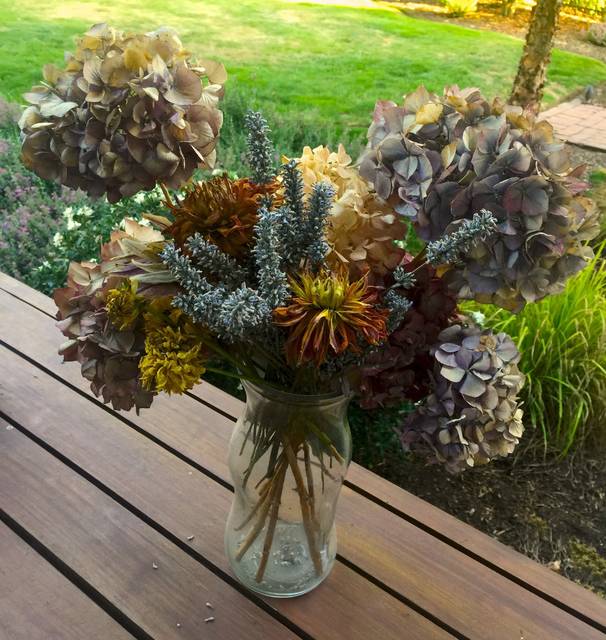To keep enjoying your garden's flowers, consider drying them
Cut flowers have an intense but brief vase life, lasting generally about a week. Yet they can be preserved as attractive and long-lasting arrangements when properly dried and displayed.
Air-drying is the simplest and cheapest way to go about it, but other methods may be better for locking in the flowers’ colors.
People often use drying agents or desiccants that include one or more mixtures of sand, activated charcoal, glycerin, gels, borax, sawdust and cornstarch. Others dry plants using dehydrators, and microwave and standard ovens.
Most common, though, is simply hanging the plants upside down by their stems in a dark, dry room. Hanging keeps the stems straight. The warmer the space, the faster the plants dry. Adding a fan helps speed things along.
“Testing with a few flowers and different drying times may be necessary, however,” said Cindy Haynes, an associate professor of horticulture with Iowa State University Extension and Outreach. Silica sand, when used for preserving flowers, tends to be better at retaining their natural colors, but no single process works for all plants, Haynes said.
When using this method, the entire flower head is normally submerged or covered in a box of the silica sand or gel.
“This is often used for delicate flowers that don’t respond well to air drying or for flowers for crafts that don’t need the stems,” Haynes said.
Blooms with a low moisture content, pinecones, seed heads, foliage, grains and grasses are the most popular choices for centerpieces or special occasion use (think wintertime weddings or fragrant Valentine nosegays). Combining their different colors, sizes, shapes and textures results in the best displays.
Certain flowers like globe amaranth, strawflower and celosia have petals that are partially dry at bloom so they dry quickly and retain their shape well during and after the drying process, Haynes said.
Some generic tips for drying flowers:
• Harvest in the cool of the morning, but after the dew evaporates. That prevents mold from developing.
• Flowers that are cut for drying should be almost fully bloomed, according to horticulturists with Johnny’s Selected Seeds in Winslow, Maine. “In the weeks when they are drying, the flowers will continue to open,” they said in a fact sheet.
• Remove all foliage from the stems, and do it while in the field. Leaves are unsightly when dried.
• Collect more than you think you’ll need, to account for breakage while handling. Dried flowers are fragile.
Remove the ads from your TribLIVE reading experience but still support the journalists who create the content with TribLIVE Ad-Free.


